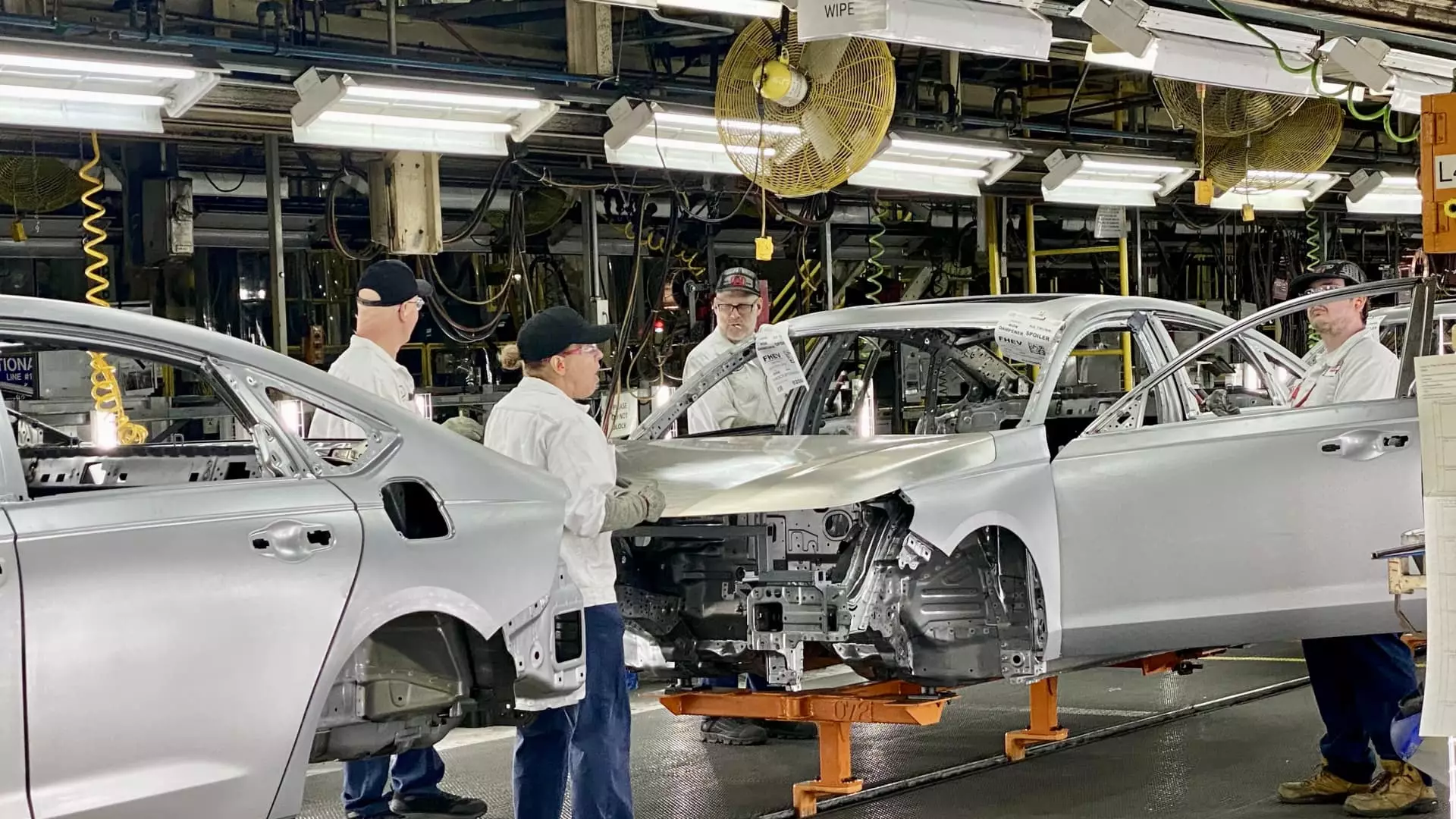In a significant strategic pivot, Honda Motor Co. is transforming its manufacturing approach by investing over $1 billion in a diverse array of advancements centered in Ohio. This marks a notable departure from Honda’s traditional model of innovation, which typically originates in Japan before being implemented in other markets. The investments were revised upwards from an initial forecast of $700 million, highlighting the automaker’s commitment to establishing a robust footprint in the rapidly evolving electric vehicle (EV) sector.
The centerpiece of this ambitious plan is the installation of six large-scale “giga presses,” technology that gained fame through its use by Tesla. These 6,000-ton die-casting machines are designed to manufacture large, intricate car parts in a single mold, thereby drastically streamlining production processes. This innovative method allows for cutting down manufacturing costs and time by casting entire components rather than welding numerous smaller parts, aligning with modern industrial practices aimed at efficiency and sustainability.
Ohio, particularly the state’s Marysville Auto Plant, is on track to become a global hub for electric vehicle manufacturing within Honda’s operations. This plant will not only produce conventional gasoline vehicles and hybrids but will also pivot towards electric vehicle production. The investment includes a dedicated $3.5 billion battery plant, situating Ohio at the heart of Honda’s EV manufacturing ecosystem.
Honda’s 4 million-square-foot Marysville facility, which has a production capacity reaching approximately 220,000 vehicles annually, is gearing up to welcome the all-electric Acura RSX crossover. This marks a key milestone as it will be the first electric vehicle to roll off Honda’s assembly lines in the U.S. Previous electric offerings were constructed through partnerships, notably in conjunction with General Motors, underscoring Honda’s historical lag in the EV market.
Innovative Manufacturing Techniques and Sustainability Goals
As Honda sets its sights on a greener manufacturing future, the company’s approach involves extensive upgrades to its production techniques. The Marysville operations are integrating nearly 60 flexible manufacturing “cells” designed for battery assembly. This innovative layout contrasts with traditional assembly lines, allowing for parallel operations that minimize disruptions.
Ultimately, this redesign supports Honda’s broader goals of achieving carbon neutrality by 2050 and selling solely zero-emission vehicles by 2040. The company’s commitment to sustainability is evident in its use of recyclable structural aluminum for the new EV battery packs. This not only reduces waste but also aligns with global trends toward more environmentally responsible manufacturing practices.
While many automakers around the world shuffle their plans amid fluctuating market dynamics, Honda remains steadfast in its mission to adapt and innovate. The push for on-shoring manufacturing in response to potential tariffs on imported vehicles demonstrates Honda’s proactive approach to mitigating economic pressures while ensuring a reliable supply chain.
Honda’s investments in Ohio are particularly noteworthy against the backdrop of a historically slower-than-expected adoption of electric vehicles in the U.S. Nonetheless, the company is amplifying its efforts to reshape its identity and manufacturing ethos as it embarks on this electric journey.
Honda’s moves in Ohio are not just about new technology, but about a fundamental rethinking of how the company operates. Corporate executives describe this initiative as a “second founding” for Honda, embodying a fresh commitment to producing electric vehicles at scale while maintaining the brand’s longstanding dedication to quality and innovation.
As the automotive industry shifts towards electrification, traditional concepts of manufacturing are being challenged. By embracing cutting-edge techniques and a commitment to sustainability, Honda is positioning itself at the forefront of this transformation. With its ambitious plans in Ohio, the automaker aims to not only meet market demand but also alter the standard for EV production, potentially influencing other manufacturers to follow suit in adopting similar methodologies.
Honda’s pivot towards electric vehicle production in Ohio signifies a strategic alignment with future industry trends and consumer expectations. As this journey unfolds, the implications for both Honda and the broader automotive landscape will be noteworthy, indicating that in a rapidly changing environment, adaptability and innovation might just be the keys to success.

